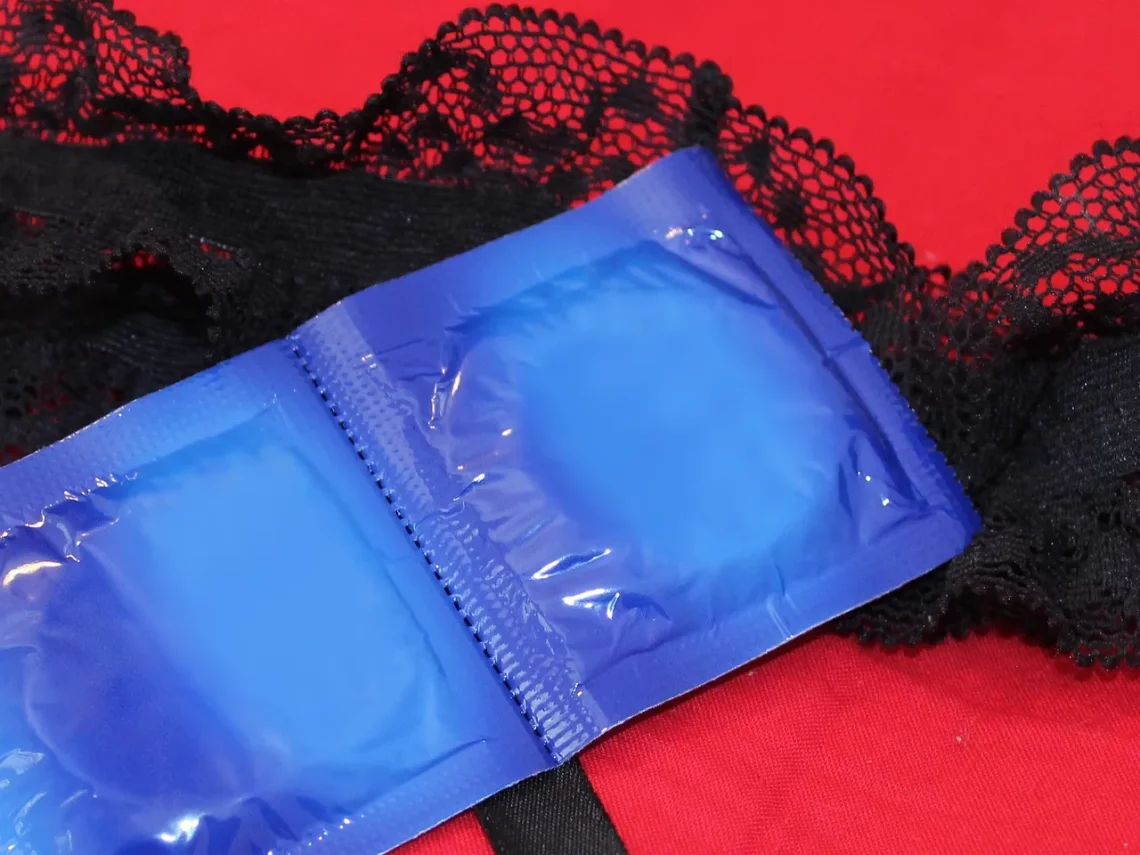
Exploring Latex-Free Condoms: Safe Options for Sensitive Individuals
In recent years, the conversation surrounding sexual health and safety has expanded to include a greater awareness of individual sensitivities and allergies, particularly regarding latex. For many, traditional latex condoms are off the table due to allergies or sensitivities that can lead to discomfort and even adverse reactions. This has prompted a growing demand for alternatives that offer the same level of protection without the risks associated with latex.
As individuals seek safe and reliable options for sexual health, various materials and brands have emerged in the market to cater to those with specific needs. The increasing availability of latex-free condoms has provided a solution for those who wish to maintain their sexual health without compromising comfort or safety. Understanding the options available, the materials used, and the benefits of these alternatives can empower individuals to make informed choices about their sexual wellbeing. Moreover, by exploring the landscape of latex-free condoms, we can also debunk common myths and misconceptions surrounding their effectiveness and reliability.
In this exploration, we will delve into the various types of latex-free condoms available and why they are an essential choice for those with sensitivities.
Different Types of Latex-Free Condoms
When it comes to latex-free condoms, several alternative materials are used to ensure safety and comfort for individuals with sensitivities. The most common materials include polyurethane, polyisoprene, and lambskin. Each of these options has its unique properties and benefits, making them suitable for different preferences and needs.
Polyurethane condoms are made from a type of plastic and are an excellent option for those allergic to latex. They are thinner than latex condoms, which can enhance sensitivity during intercourse. Polyurethane is also compatible with oil-based lubricants, which is a significant advantage for those who prefer using these types of products. However, it’s essential to note that while polyurethane condoms offer strong protection against pregnancy and sexually transmitted infections (STIs), they may not provide the same level of elasticity as latex, which can result in a slightly different fit.
Polyisoprene condoms are another popular choice. This synthetic rubber is specifically designed to mimic the elasticity of latex while remaining latex-free. Polyisoprene condoms offer a snug fit and are effective in preventing pregnancy and STIs. They are also soft and stretchable, which can enhance comfort during use. Additionally, polyisoprene condoms are not compatible with oil-based lubricants, so it’s essential to use water or silicone-based lubricants for the best experience.
Lastly, lambskin condoms, made from natural membrane, offer a unique option for those seeking a latex-free alternative. While they are effective for pregnancy prevention, it’s crucial to note that lambskin condoms do not provide adequate protection against STIs, as the pores in the material can allow viruses to pass through. Therefore, they are best suited for monogamous couples who are certain of each other’s STI status.
Understanding these different types of latex-free condoms can help individuals make informed decisions based on their preferences and health needs. Whether prioritizing sensitivity, comfort, or specific protective features, there is a latex-free option available for everyone.
Benefits of Using Latex-Free Condoms
The benefits of using latex-free condoms go beyond mere allergy avoidance. For individuals with latex sensitivities, these alternatives can significantly enhance their sexual experience while still ensuring safety and protection.
One of the primary advantages of latex-free condoms is comfort. Many users report that materials like polyisoprene and polyurethane feel softer and more natural than traditional latex. This can result in a more enjoyable experience for both partners, as these condoms often have a less restrictive fit and greater sensitivity. The reduction in friction and irritation can lead to a more pleasurable sexual encounter, promoting a healthier and more satisfying intimate relationship.
Moreover, latex-free condoms can offer a broader range of options for lubrication. Since polyurethane condoms can be used with oil-based lubricants, users have greater flexibility in their choices. This can enhance pleasure and reduce the risk of condom breakage, which is often associated with incompatible lubricants.
In addition to comfort and lubrication, latex-free condoms can also cater to various lifestyles. For individuals who prefer natural or organic products, lambskin condoms provide a viable option, albeit with the understanding of their limitations regarding STI protection. For couples seeking to conceive, polyisoprene and polyurethane condoms can still be used effectively while avoiding latex.
Furthermore, the increased awareness and availability of latex-free condoms have led to better education and understanding of sexual health. As more people become aware of their options, they are encouraged to prioritize their sexual wellbeing and communicate openly with their partners about their needs and preferences. This can foster a more informed and responsible approach to sexual health, ultimately leading to safer practices and a more enjoyable experience.
Choosing the Right Latex-Free Condom
Selecting the right latex-free condom can be a daunting task given the variety of options available. However, understanding personal preferences and needs can make this process easier and more effective.
First and foremost, individuals should consider their comfort level with different materials. Some may prefer the feel of polyisoprene, while others might find polyurethane to be more suitable. It’s advisable to try out a few different brands and types to determine which one feels best during use. Many companies offer sample packs, allowing users to experiment without committing to a larger purchase.
Another critical factor to consider is the size and fit of the condom. Just as with traditional latex condoms, fit can vary by brand and type. A well-fitting condom is essential for both comfort and effectiveness in preventing pregnancy and STIs. Users should be mindful of the size options available and select a condom that feels secure without being too tight or loose.
Lubrication is also an essential consideration when choosing a latex-free condom. As mentioned earlier, polyisoprene condoms require water- or silicone-based lubricants, while polyurethane condoms can be used with oil-based products. This distinction can significantly impact the overall experience, so users should ensure they have compatible lubricants on hand.
Lastly, it’s important to review the packaging and product details. Look for condoms that are tested for safety and effectiveness, as well as those that meet regulatory standards. Reading reviews and seeking recommendations can also provide valuable insights into which brands and types of latex-free condoms are well-regarded by users.
By taking these factors into account, individuals can select the right latex-free condom that aligns with their preferences, ensuring a safer and more enjoyable sexual experience.
Common Myths About Latex-Free Condoms
Despite the growing popularity of latex-free condoms, several myths and misconceptions continue to circulate, often leading to confusion among consumers. Addressing these myths is crucial for promoting informed decision-making regarding sexual health.
One prevalent myth is that latex-free condoms are less effective than their latex counterparts. This misconception may arise from a lack of awareness about the rigorous testing and quality control measures that many latex-free condoms undergo. In reality, both polyisoprene and polyurethane condoms are designed to provide a high level of protection against pregnancy and STIs when used correctly. Scientific studies have shown that latex-free condoms can be just as effective as latex condoms, dispelling the notion that they are inferior.
Another common belief is that latex-free condoms are only for individuals with allergies. While it is true that these condoms cater to those with latex sensitivities, they are also an excellent option for anyone looking for alternative materials that may enhance their experience. Preference for different materials can stem from personal comfort, sensitivity, or even a desire for a different sensation during intercourse.
Some may also think that latex-free condoms are more expensive than traditional latex options. While this can be the case with some premium brands, many latex-free condoms are competitively priced and may even be found at a similar cost to latex products. As awareness increases, more affordable options are becoming available, making them accessible to a broader audience.
Lastly, there is a myth that all latex-free condoms are created equal. The truth is that various brands and materials can offer different experiences and levels of protection. Therefore, it’s essential for users to research and choose the right product that suits their needs and preferences.
By debunking these myths, individuals can make more informed choices about their sexual health, ensuring they select the best products for their unique situations.
In conclusion, choosing the right condoms is vital for maintaining sexual health, particularly for those with latex sensitivities. Latex-free options provide a safe and effective alternative, allowing individuals to enjoy their intimate moments without compromising their comfort or wellbeing.
**Disclaimer:** This article is for informational purposes only and should not be considered medical advice. For any health concerns or questions, please consult a qualified healthcare professional.




